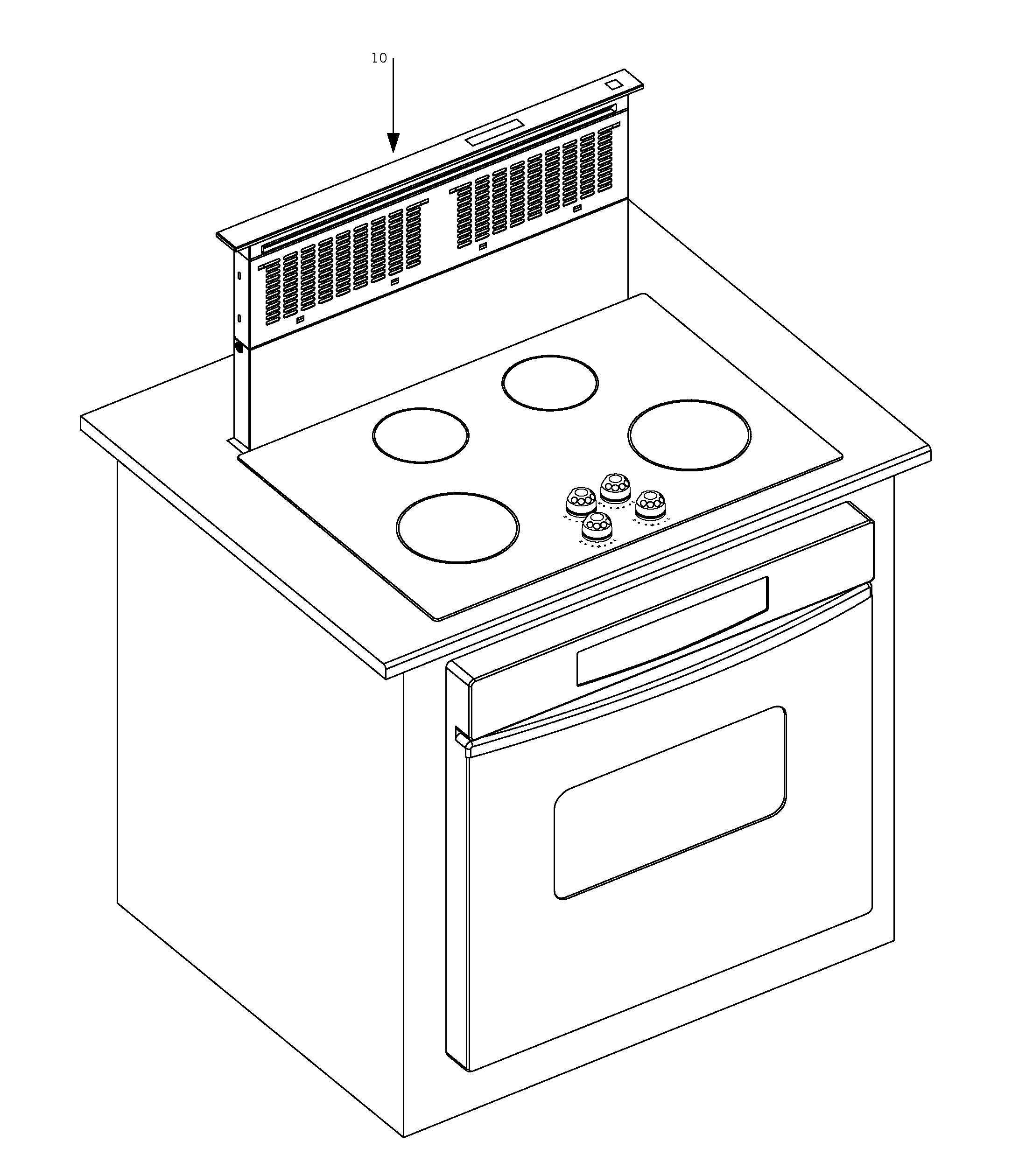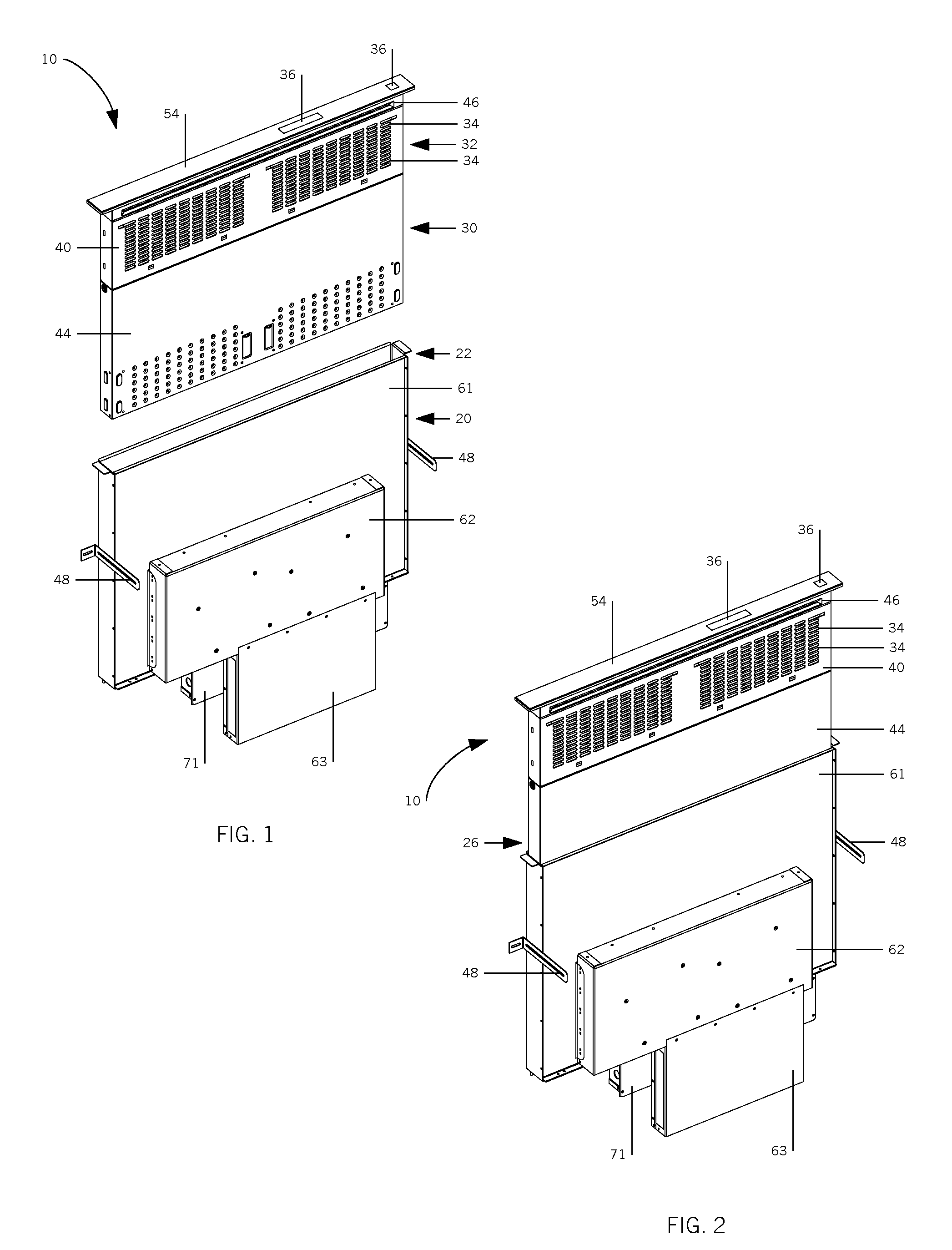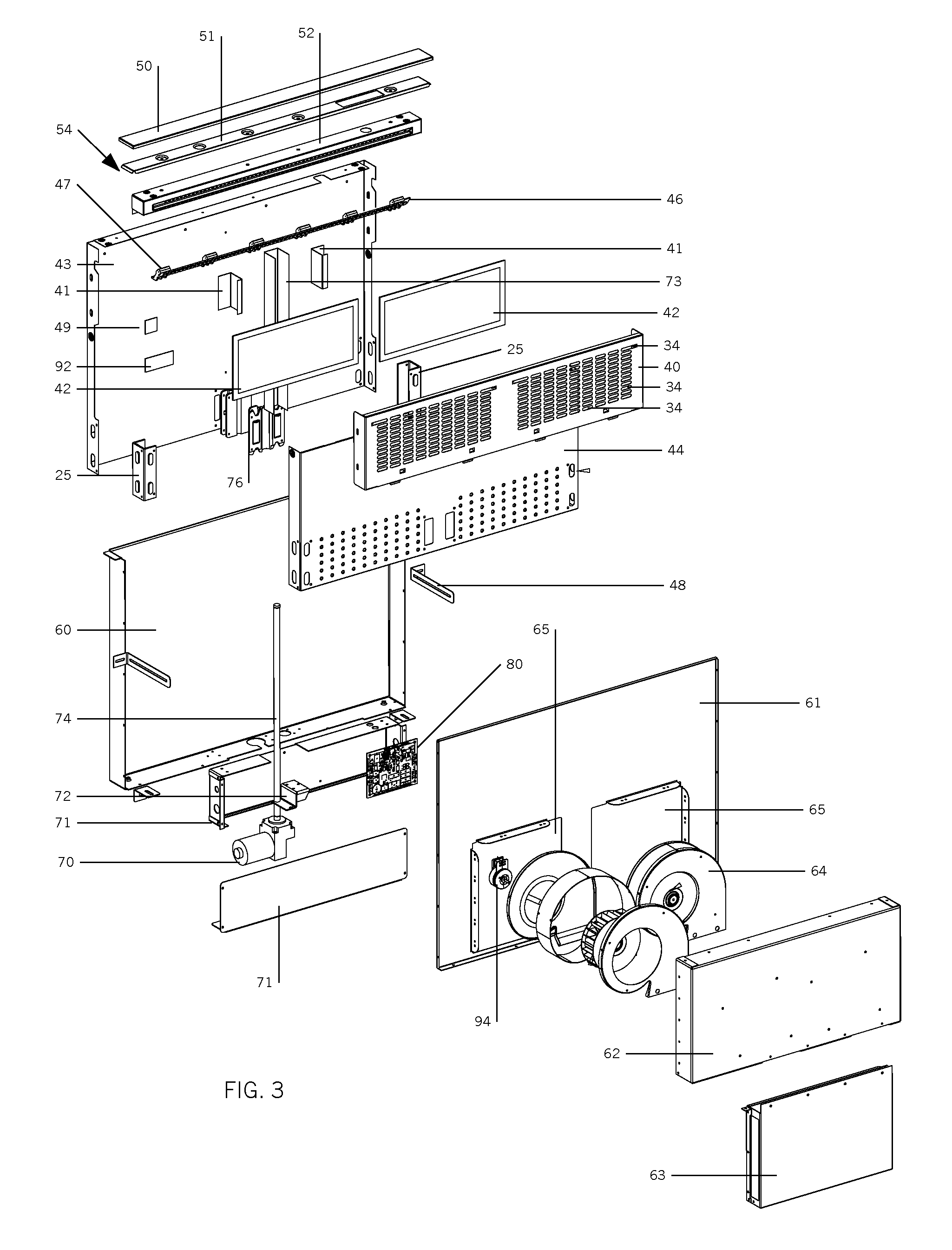The large draw requires a large motor which increases costs,
noise, size and weight.
A typical telescoping down draft ventilation
system is about six inches in depth and therefore cannot fit it in the back of a cook top while providing enough space for the oven.
By not having the fan / blower part of the telescopic down draft, issues such as drawing air into the
system, wiring,
user control and installation problems may arise.
The inherently light construction of the forward curved blade does not permit the wheel to be operated at speeds needed to generate high static pressures and therefore cannot be used in telescoping downdraft ventilators.
A drawback is that it must be designed for twice the speed, which increases the cost of the unit.
This is due to the belief that this type of fan cannot provide the static pressure needed for drawing, its size and spacing requirements.
Without the aperture, the fan is not truly a
propeller fan, since it cannot positively move air from one space to another.
In down draft ventilation technology, this method of moving air has never been used.
The bending of the
airflow reduces the suction effectiveness of a telescoping downdraft ventilator using a
centrifugal fan / blower.
Because of the air
stream bending, a large loss of suction occurs, resulting in poor ventilation performance.
These units are very loud and tends to be a problem with present telescoping downdraft ventilators.
These mechanical / tactile type controls may be inaccurate and have a tendency to not to work properly.
These types of products provide an increased rate of failure and other operating problems.
The mechanical switches used are inaccurate in their setting and
repeatability.
These present controls have problems maintaining a
set point with swings in repeatedly reaching set points.
This is partly due to the design of the telescoping downdraft ventilator and method of drawing air, but also because of the inaccuracy of the mechanical switches themselves.
Mechanical control switches have known issues such as
hysteresis, which contributes to their inaccuracy in hitting a
set point or repeating a function.
Mechanical levers are used and over time they
change positions causing additional problems for the user.
Without proper protection these switches cause problems and eventually fail completely.
If subjected to cold temperatures, mechanical switches may work slowly, crack, become hard to turn, fail to operate,
lubrication can harden causing the operation not to function, cause switch chatter resulting in
premature failure or reduced life of product, and cause other user issues.
If subjected to hot temperatures, mechanical switches may operate slowly from the
lubrication drying out, crack, discolor, become hard to turn, fail to operate, cause switch chatter, cause
premature failure or cause user issues when trying to set or operate these controls.
Special sealed controls used in these environments increases the price of a telescoping downdraft ventilator, mechanical switches and controls when used outdoors in telescoping downdraft ventilator of present design need to be covered, protecting them from the environment.
This protection increases the cost for these products and may introduce safety issues.
This also sets up an area for
contamination to get in which can cause problems or failure.
In the manufacturing process of these tactile switches,
contamination can enter the space, which over time causes problems for the user and sometimes results in failure.
Thus adding an extension to any switch can cause problems for the user both in a build up of contamination but also in the ability to clean.
No method of proper
airflow detection is provided to the user to indicate the need to change the filter.
In fact, the filters on some designs are hidden from view.
Other manufacturers have placed a run time and timing out setting as to when the filters should be removed, but this is not or can in fact detect if filters are truly plugged.
For the heavy user the filter would need cleaning sooner and this feature is a problem.
This is acceptable if the user is using a
metal mesh filter that can be washed and replaced, but if the user is using a carbon filter this can get costly.
With present designs, they are limited to islands only, primarily due to their bulky size and lack of room for other appliance below the cook top.
With the present units built into an island the ability to provide light is also problem for the user.
The present range hood type units are the only ones that provide lighting from above, and a telescoping downdraft ventilator does not provide lighting.
Thus the user may have problems using these ventilators because of the lack of lighting.
In an island counter installation, the lack of ability to place lights above may exacerbate this problem.
Other issues are presented by present telescoping downdraft ventilators,
stemming from the height that these units extend up from the counter top.
The low extending units provide no effective draw when a large tall pot is place on a burner.
On the other hand units that extend 15 inches up provide limited effectiveness when using a frying pan.
It has been reported that the drawing air can
blow out the gas
flame.
On ranges with auto sparking for relighting of the gas burners, it has been reported that these ventilators cause continued sparking due in part to the ventilator blowing out the
flame.
So to have a one-piece telescoping inner member that can rise up to 15 inches is not possible unless you limit the height to less than 7 inches.
Again, this is a problem with tall pans with present units.
Quality issues remain with the present telescoping downdraft ventilator operations in their ability to move up and down.
Some use a scissor mechanism with many parts, which may jam up, bind, or fail to operate.
Also, the operation of these scissors types, are not smooth in movement when moving up or down.
The use of mechanical switches to detect stopping points for both up and down are used with reliability problems plaguing these units due to the problems associated with mechanical switches and levers.
These complicated methods may cause additional issues, problems and failure points with costly repair and manufacturing prices.
Present design are large and bulky.
Telescoping downdraft ventilators built into a cabinet on an island counter top and the space below the unit are not available due to the centrifugal blower below and the size of the base housings presently used filling the space.
This also limits the telescoping downdraft ventilator from being used as a freestanding unit, as a mobile unit, used in a cabinet (e.g., suspended), or in areas that do not have the ability to support a large structural frame.
 Login to View More
Login to View More 


